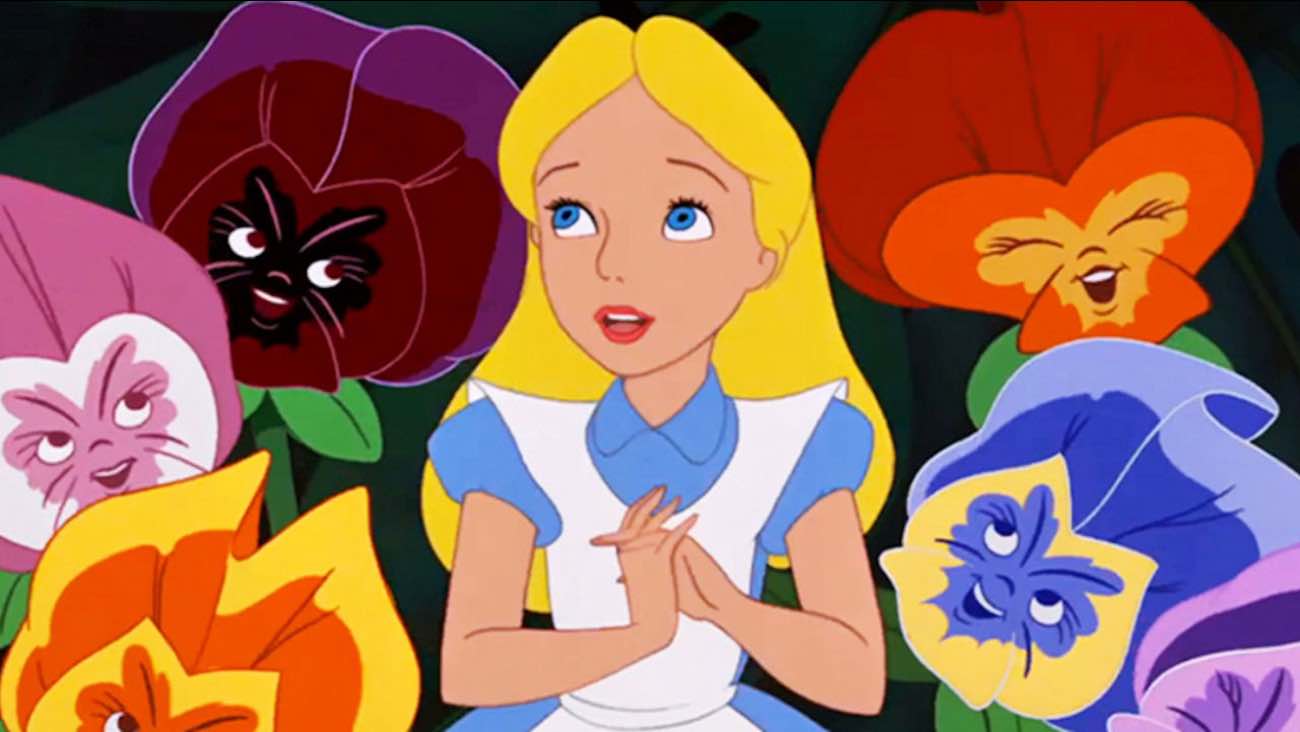
I didn’t grow up loving Alice in Wonderland. While I watched the original Disney film as a child, it wasn’t until high school and later in college that I truly fell in love with the whimsical world created by Lewis Carroll. Alice’s Adventures in Wonderland, Carroll’s novel that later inspired the Disney movie and countless other retellings is a children’s book. Buttis not hard to see why it means so much to adults, including myself. Alice’s story is about identity, the loss of childhood, and coping with rapid changes. But for me, Alice’s Adventures in Wonderland is about dissociating and using a dissociative episode to learn about yourself and your trauma.
In the story, Alice falls asleep and ends up dreaming of a fantastical world, Wonderland. There she meets unique characters full to the brim with distinct personalities. They stand out from Alice herself because at the start, Alice is meek, quiet, unsure of herself, and overall doesn’t have much personality. Throughout her journey, many of the characters she meets point out exactly how unsure and boring she is. From her size, to what she wears, to her personality, Alice is not distinct. She is not interesting at first, but that changes. Alice finds herself and her voice, and by the end, she goes from a scared child to a fierce young woman willing to speak out to a cruel queen without fear. At the end of her adventure, it is revealed it was all a dream, something her mind made up to cope with her trauma.
I have struggled to feel included with friends, family, and even at work. I would not say I am socially awkward but I often do not feel like I belong even in spaces that I am welcome and have contributed to. Similarly, Alice never feels like she belongs in Wonderland, a fantasy she creates. Part of this is having anxiety, depression, and ADHD. I dissociate easily and often struggle to see my worth even in the things I have created or written. Dissociation is a break in how the mind handles information. During a dissociative episode, I am disconnected from my thoughts, feelings, memories, and surroundings. I feel stuck in an endless loop with no power.
It wasn’t until I started Eye Movement Desensitization and Reprocessing (EMDR), a psychotherapy treatment that is designed to alleviate the distress associated with traumatic memories, that I began to understand my episodes. EMDR helps reformat negative memories and process them in a healthy manner. Going through the therapy is like purposefully triggering yourself, reliving your worst moments, and being forced to grow from them and understand why they hurt.

Despite initially feeling like nonsense, Wonderland has a lot of meaning and parallels to Alice’s real life. Her insecurities and the things her sister says to her are projected through the Caterpillar and even the Mad Hatter. Alice doesn’t understand why she is in Wonderland. She doesn’t understand who the unique, peculiar, and often cruel characters in Wonderland represent. It is not until Alice wakes up that she really understands what Wonderland means. This is mostly seen when she returns to Wonderland in Through The Looking Glass and while she struggles with some of the same feelings of being lost she has in Alice’s Adventures in Wonderland she is ultimately more confident. Alice learns from her time in Wonderland so her return feels familiar and while she still struggles, she eventually is able to understand the world around her without the same hesitation she had prior. Through The Looking Glass gives us an Alice that has seen trauma but has ultimately grown from it.
Like Alice, we don’t get to choose when something is or isn’t traumatic. The smallest microaggression can leave a gaping hole in your psyche. That tiny trauma can quickly elevate until suddenly every decision you make is deeply impacted because of something that happened years ago. Even scarier, more often than not, we are not aware of what moment causes the break.
As Alice continues on her journey home she faces her insecurities and grows from them while understanding why they exist. In the case of The Mad Tea Party, as nonsensical as it is, the Mad Hatter proves to Alice that she is mad and that it is okay. Therapy taught me it is okay to not be okay and after every EMDR session, I grew and I changed. It might have been a small change, but a multitude of tiny changes can completely alter a person, for good or bad.
While speaking to the Mock Turtle and the Gryphon about her adventures, Alice says, “I could tell you my adventures—beginning from this morning, but it’s no use going back to yesterday, because I was a different person then.” Every time I re-read the classic book I find something new that speaks to me which is poetic since Alice’s journey ends with her being a different, better person. Alice’s Adventures in Wonderland is a different book every time I read it because I have changed since the last time. I have grown and I have learned how to cope.






